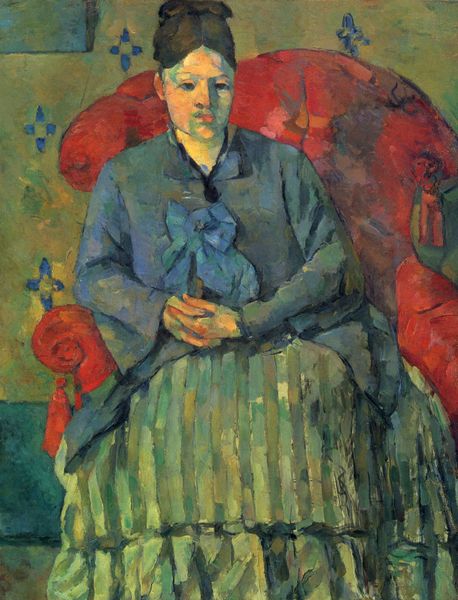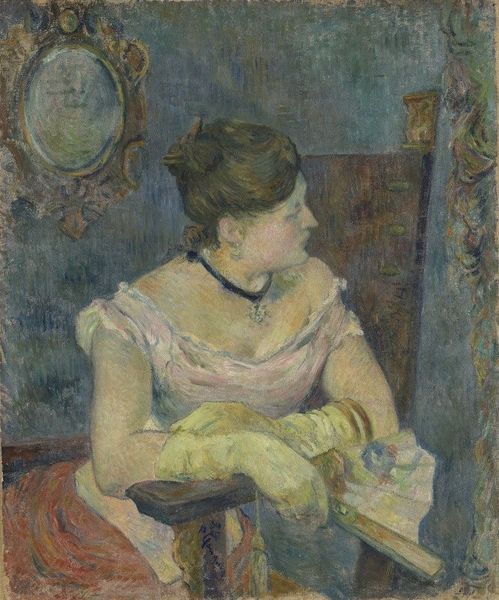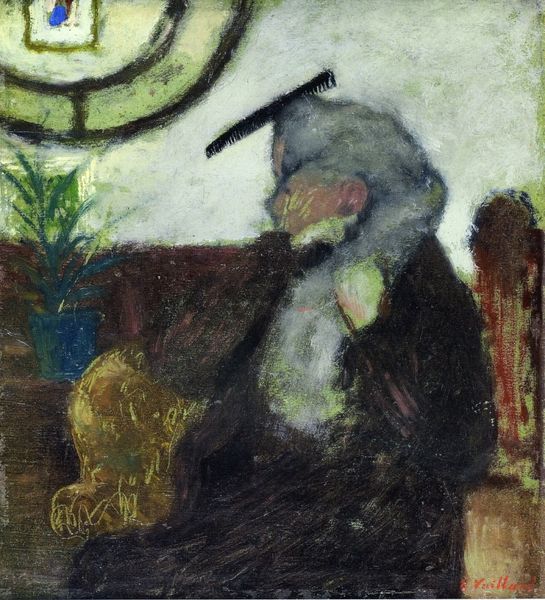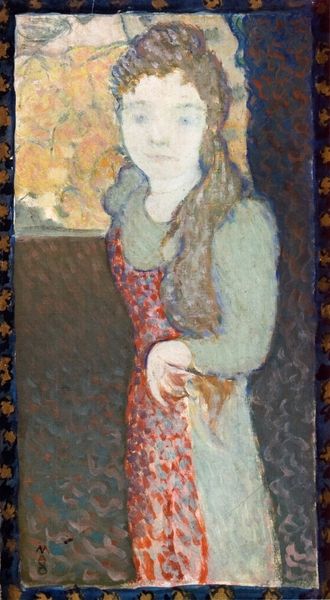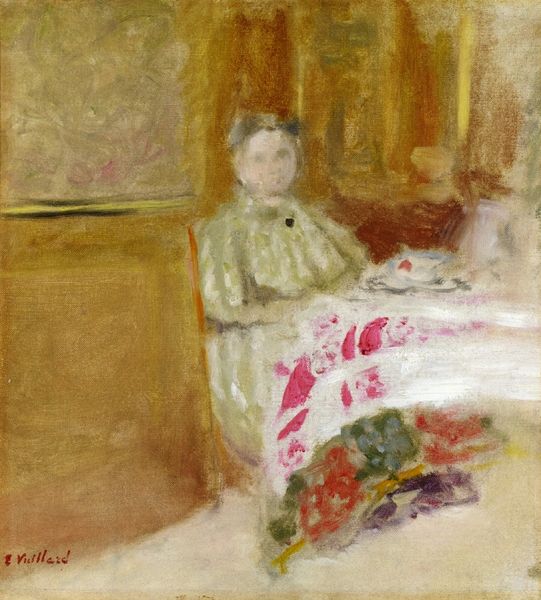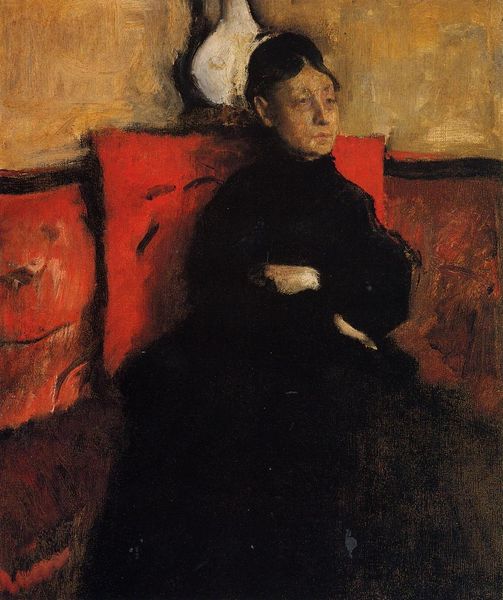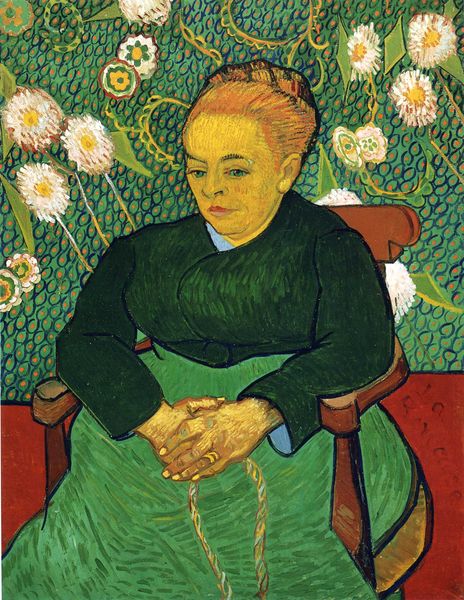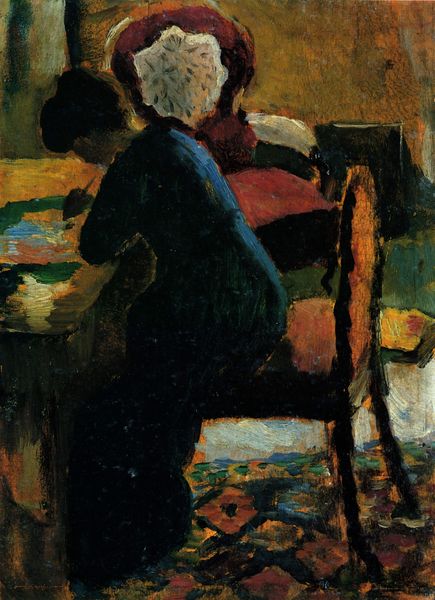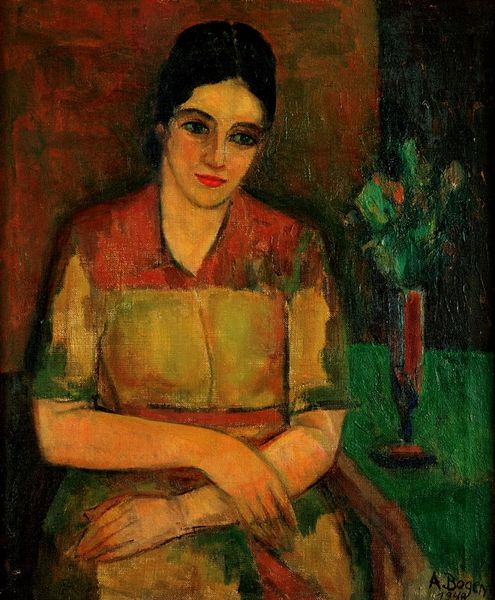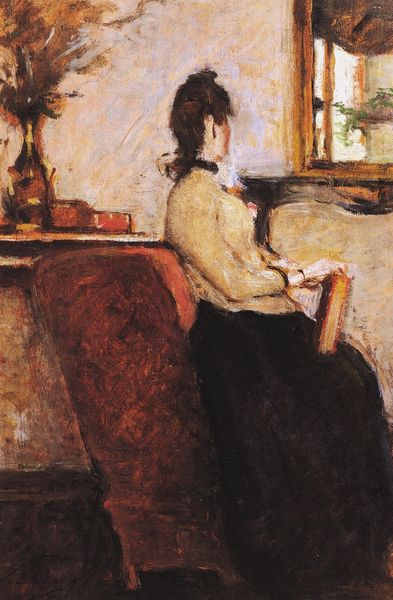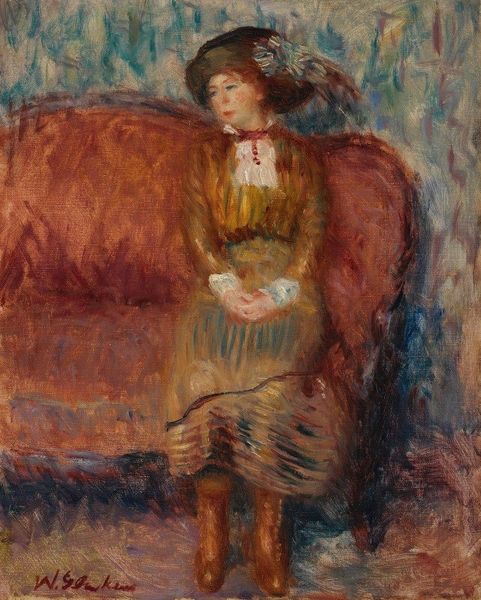
painting, oil-paint, impasto
#
portrait
#
painting
#
oil-paint
#
oil painting
#
impasto
#
intimism
#
post-impressionism
Dimensions: 26 x 22.3 cm
Copyright: Public domain
Curator: Upon initial viewing, I find myself drawn to the texture. The heavy impasto gives a tactile quality. Editor: We’re looking at "Madame Vuillard Seated", an oil painting created by Édouard Vuillard in 1893. The artist certainly prioritized capturing the interior life of domestic scenes like this one. Curator: It's interesting how Vuillard uses these almost blurred forms. He gives a sense of comfortable confinement; one can almost smell the aroma of aged furniture, feeling the softness of textiles. Does it make anyone else wonder about labor practices of fabric production at this time? Editor: In contrast to clear lines and definite boundaries, the blending invites a dreamlike state. There is something about the faceless rendering that prompts the question of the woman's identity beyond the societal role implied. Almost as if every woman who fulfilled such societal constraints could represent Madame Vuillard. Curator: Perhaps he meant for her to represent a universal mother or wife archetype? I’m equally caught on the artistic process. Think of the physicality of applying such thick paint and also think about how commercially sourced that oil-paint was as a change in earlier art historical periods. Editor: The darkness also emphasizes an ambivalence in tone. We have those rich patterns and the comfort of being indoors contrasted by an oppressive atmosphere. It is if all of those repeated familial interactions build tension or distance. Curator: Exactly. Those patterned fabrics themselves become culturally coded objects. Vuillard understood his society well enough to comment, by highlighting a complex weave of materials to create a sense of place. Editor: Yes, even in their opulence, such furnishings served a largely symbolic role; indicators of status that reflected aspirations rather than daily realities, the labor to secure all of that hidden behind parlor doors. Curator: Studying his application of paint layers lets you notice so much; those layers echo not only literal artistic creation, but represent social stratification as well as the subject's lived moments in the same physical place. I might start working in a similar impasto method myself. Editor: Examining the image today lets you weave meaning into its motifs; the social and the psychological as embodied in a moment frozen by impasto.
Comments
No comments
Be the first to comment and join the conversation on the ultimate creative platform.

